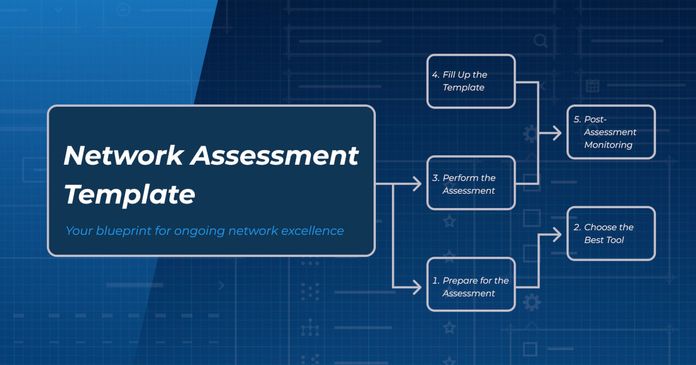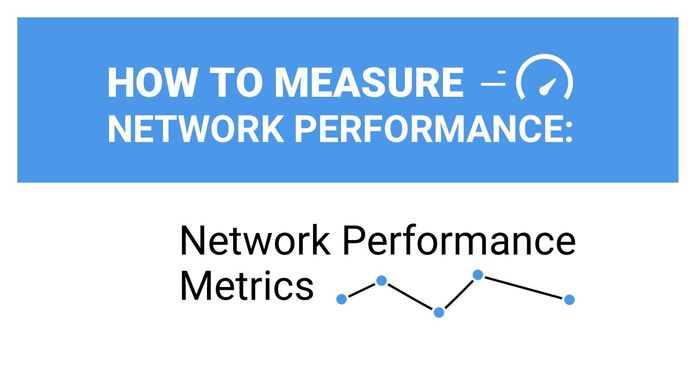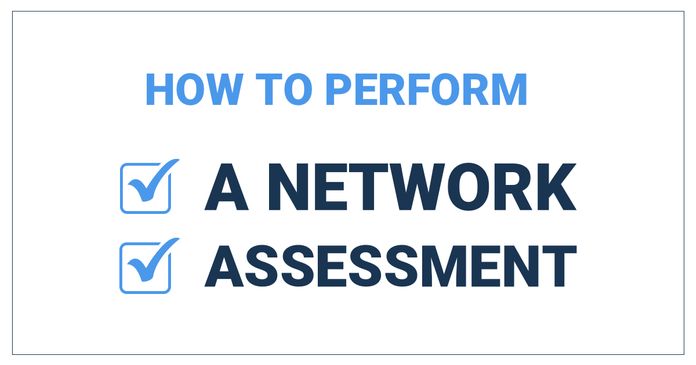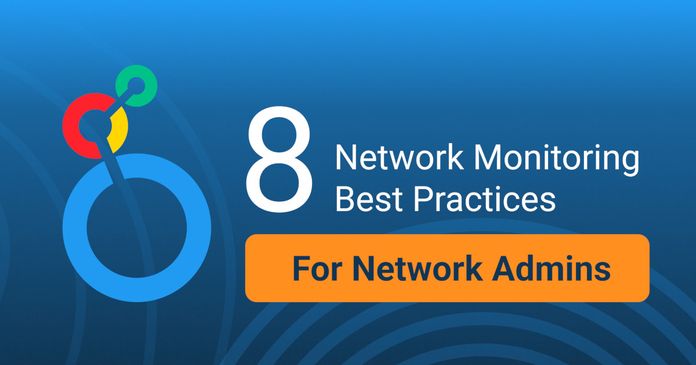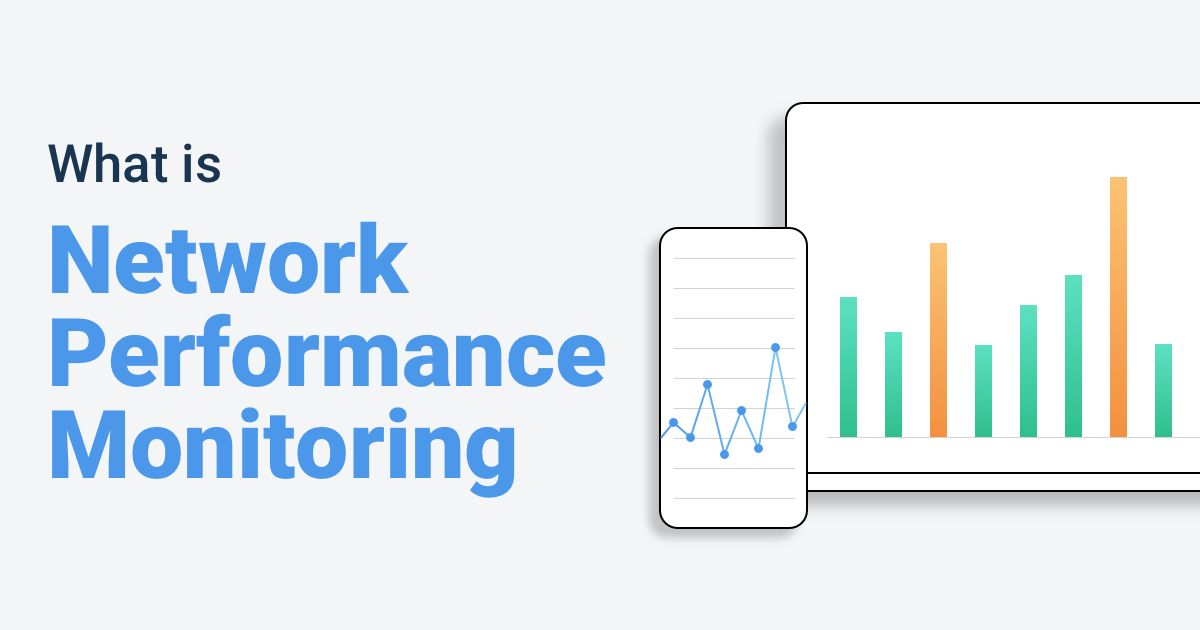Table of Contents
Table of Contents
In our digitally-driven world, networks serve as the backbone of every organization's operations. Whether you're a business, a healthcare facility, an educational institution, or a government agency, the efficiency and reliability of your network infrastructure can make or break your daily operations.
Whether it's managing data, communicating with clients and customers, or facilitating internal processes, a reliable and high-performing network is essential for maximizing productivity and ensuring seamless operations. This is where network performance management comes into play.
The traditional, reactive approach to network management no longer suffices in an era where downtime and performance issues can lead to significant losses. It's time to shift our perspective and adopt a proactive stance toward Network Performance Management. In this blog post, we'll explore the why and how of this approach, offering insights into the tools, strategies, and best practices that can help you stay ahead of network issues, ensuring smooth operations and enhanced productivity.
Network performance management refers to the process of monitoring, analyzing, and optimizing the performance of a computer network. It involves the measurement and management of various network parameters, such as bandwidth utilization, latency, packet loss, and throughput, to name a few. By closely monitoring these metrics, organizations can proactively identify potential bottlenecks, vulnerabilities, or performance issues that may hamper their network's efficiency.
The significance of network performance management lies in its ability to prevent costly network downtime, service disruptions, and degraded user experiences. By adopting a proactive approach to network performance management, organizations can minimize these risks and maintain optimal network performance.
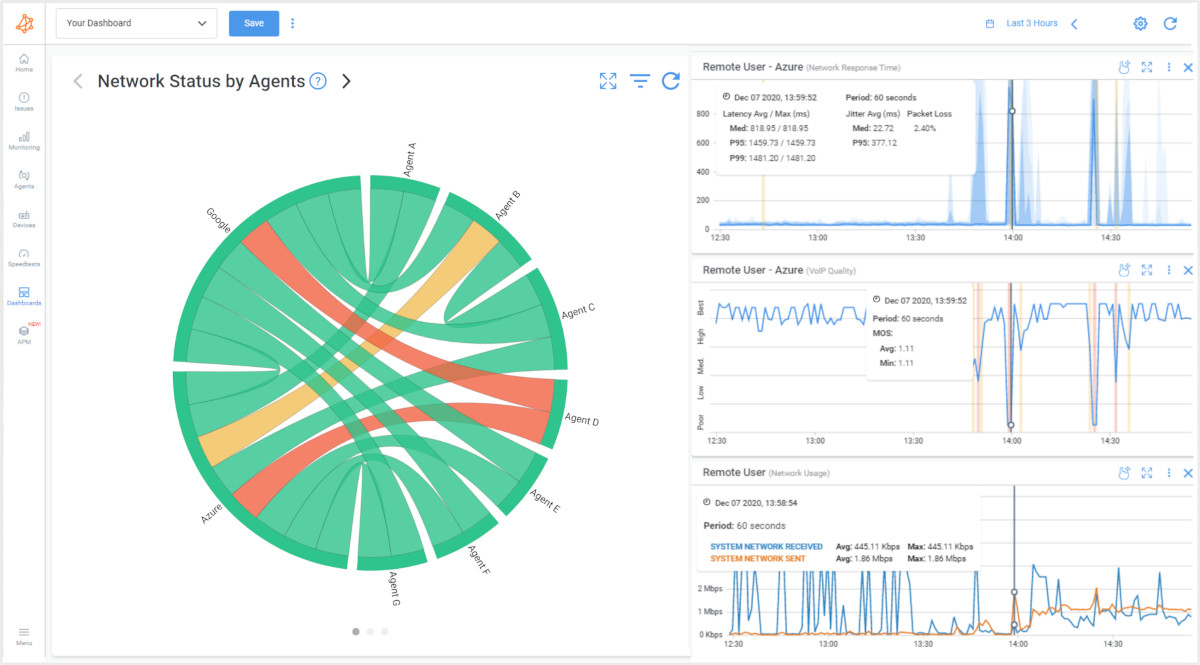

Traditionally, network performance management has been a reactive process, where IT teams would primarily address performance issues as they arise. However, with the increasing complexity of modern networks and the growing reliance on digital infrastructure, reactive approaches are no longer sufficient. Organizations need to take a proactive stance to ensure their networks operate at peak performance levels consistently.
A proactive approach to network performance management involves actively monitoring network performance, analyzing trends, and identifying potential issues before they impact the network's functionality.
By leveraging real-time monitoring tools and predictive analytics, IT teams can gain deep insights into network behavior, detect anomalies, and take preventive measures to avoid downtime or performance degradation.
By adopting a proactive approach, organizations can reap several benefits. Firstly, they can prevent network downtime, which can save substantial financial losses and maintain operational continuity. Secondly, they can maximize network efficiency, ensuring smooth and fast data transmission, which directly translates into enhanced productivity and user satisfaction.
Additionally, proactive network performance management can reduce costs by optimizing network resources, minimizing unnecessary expenditures, and streamlining IT operations.
In the following sections of this article, we will delve deeper into the concepts, strategies, and best practices of proactive network performance management. We will explore the key components involved, the benefits it offers, and the strategies organizations can employ to implement a proactive approach effectively.
So, let's get started on the journey towards maximizing productivity and minimizing downtime through proactive network performance management.
To effectively implement a proactive approach to network performance management, it is crucial to have a solid understanding of its core components and how they contribute to maintaining optimal network performance. In this section, we will explore the definition of network performance management, as well as use cases, and key network performance management elements.
Network performance management encompasses the processes and practices involved in monitoring, measuring, and optimizing the performance of computer networks. It aims to ensure that networks operate efficiently, deliver data reliably, and meet the performance expectations of users and applications.
By continuously assessing network performance, organizations can identify potential issues, troubleshoot problems, and make informed decisions to improve overall network health.
Network performance management involves tracking a wide range of parameters that influence network performance, including bandwidth utilization, network utilization, latency, packet loss, network congestion, response times, and device availability.
It leverages various monitoring tools and technologies to collect and analyze data, providing insights into network performance trends, identifying performance bottlenecks, and enabling proactive actions to maintain optimal performance.
Network Performance Management (NPM) is the practice of ensuring networks run smoothly, securely, and efficiently. This section explores the many uses of NPM, from optimizing performance and security to enhancing the user experience and planning for future network needs. Let'd discover how NPM plays a pivotal role in the success of modern organizations:
- Optimizing Network Performance: NPM tools monitor, analyze, and optimize network performance to ensure that the network operates at peak efficiency. This involves identifying and resolving issues that can degrade performance, such as congestion, bottlenecks, or latency.
- Proactive Issue Detection: NPM tools provide real-time monitoring and alerts, allowing network administrators to proactively detect and address performance issues before they impact end-users or critical business processes.
- Capacity Planning: NPM helps organizations plan for future network capacity requirements by analyzing historical data and predicting network growth. This ensures that the network can accommodate increasing demand without performance degradation.
- Security Monitoring: NPM tools play a crucial role in network security by monitoring for unusual or malicious activities, detecting intrusions, and ensuring that the network adheres to security policies and compliance requirements.
- Troubleshooting and Diagnostics: When network issues arise, NPM tools assist in diagnosing and resolving problems. They provide insights into the root causes of performance issues, helping administrators to minimize downtime and disruptions.
- User Experience Enhancement: NPM incorporates User Experience Monitoring to measure how network performance affects the end-user experience. It assesses factors like application response times, load times, and quality of services to ensure user satisfaction.
- Application Performance Management: NPM tools evaluate the performance of specific applications, helping organizations understand how well these applications function within the network.
- Cloud Network Monitoring: With the rise of cloud computing, NPM extends its capabilities to monitor network performance and resources in cloud environments, ensuring that cloud services meet performance expectations and security standards.
- Resource Allocation: NPM aids in efficient resource allocation by identifying over-provisioned or underutilized network resources, which can result in cost savings.
- Service-Level Agreement (SLA) Adherence: NPM ensures that network services meet agreed-upon service or Internet SLAs, providing organizations with evidence of compliance for reporting and accountability.
- Historical Data Analysis: NPM tools store historical performance data, which is useful for identifying long-term trends, making data-driven decisions, and understanding how the network has evolved.
In summary, Network Performance Management is used to ensure that network infrastructure operates optimally, securely, and reliably. It plays a pivotal role in maintaining network health, meeting the needs of end-users and applications, optimizing resource allocation, enhancing security, and supporting business growth and continuity.
To maintain a high-performing network, Network Performance Management (NPM) has emerged as an indispensable practice.
Network Performance Management (NPM) involves a set of tools and practices aimed at optimizing the performance, reliability, and efficiency of a network. Understanding its key components is essential in ensuring the optimal operation of your network infrastructure. In this section, we will delve into the fundamental building blocks that make up Network Performance Management, providing insights into how each component contributes to the reliability, efficiency, and adaptability of your network.
To effectively manage network performance, several key components come into play. Let's take a closer look at each of them:
Network Performance Monitoring is a cornerstone of Network Performance Management, serving as the eyes and ears of your network infrastructure. It involves real-time, continuous, and proactive observation of various network elements and parameters to ensure that your network operates optimally.
Monitoring tools provide real-time visibility into the network, enabling IT teams to detect anomalies, troubleshoot issues promptly, and take preventive measures. Here's a more detailed exploration of this vital concept:
- Real-time Visibility: NPM provides real-time visibility into the components of your network, allowing you to see what's happening at any given moment. This includes monitoring the health and status of devices like routers, switches, servers, and applications. By continuously collecting data on key network metrics, such as bandwidth utilization, latency, and packet loss, NPM offers insights into the current state of your network.
- Proactive Issue Detection: Network Performance Monitoring isn't just about knowing what's happening now; it's about anticipating and mitigating issues before they impact operations. By setting up alerts and thresholds, NPM tools can instantly notify you when anomalies or performance deviations occur. This proactive approach allows you to address problems swiftly, minimizing downtime and disruptions.
- Capacity Planning: NPM goes beyond just reporting current network conditions; it also assists in future-proofing your network. By analyzing historical data and trends, you can make informed decisions about capacity planning and resource allocation. This ensures that your network can handle increased loads and growing demands without performance degradation.
- Traffic Analysis: To truly understand your network's performance, NPM delves into the specifics of network traffic. It employs deep packet inspection to identify the types of traffic and the applications that consume network resources. This insight helps in optimizing the allocation of bandwidth and resources for mission-critical applications.
- User Experience Optimization: NPM goes beyond the technical aspects; it's also about enhancing the end-user experience. It measures how network performance impacts user interactions, including response times, application load times, and the quality of services like VoIP and video conferencing.
In summary, Network Performance Monitoring is the vigilant guardian of your network's health and functionality. It empowers you with real-time insights, helps you pre-empt potential issues, and ensures that your network remains responsive, secure, and efficient. Whether your goal is to improve user experience, plan for future growth, or enhance network security, NPM is the foundation upon which these objectives are achieved.
Networks may be complex. But Obkio's Network Performance Monitoring tool makes network monitoring easy. Monitor, measure, pinpoint, troubleshoot, and solve network problems.
- 14-day free trial of all premium features
- Deploy in just 10 minutes
- Monitor performance in all key network locations
- Measure real-time network metrics
- Identify and troubleshoot live network problems

Performance analysis is a critical aspect of Network Performance Management (NPM) as it allows organizations to gain insights into the health and efficiency of their network infrastructure. Two primary methods for performance analysis are packet capture and synthetic monitoring. Each approach offers distinct advantages and use cases:
Packet capture, also known as packet sniffing or deep packet inspection, provides unparalleled visibility into network traffic. It allows you to capture and analyze the actual data packets that traverse the network. This level of granularity is essential for diagnosing complex issues and understanding the specifics of what's happening on the network.
Since packet capture deals with actual network traffic, it provides real-world insights. It is particularly useful for monitoring how applications and services perform under real conditions, making it an excellent choice for assessing user experience.
Synthetic monitoring involves generating artificial network traffic to mimic real user interactions. It is a proactive approach to assessing network performance by simulating user behaviors, including website visits, application usage, and service requests.
Synthetic monitoring tools can run tests around the clock, providing a continuous assessment of network performance. This ensures that potential issues are detected immediately, often before real users are affected. Synthetic monitoring is valuable for benchmarking network performance against service level agreements (SLAs) and industry standards. By setting performance benchmarks, you can measure how well your network meets expectations and compliance requirements.
Finally, synthetic monitoring can simulate user interactions from various geographic locations, providing insights into the performance of applications and services from different regions. This is especially useful for organizations with a global user base.
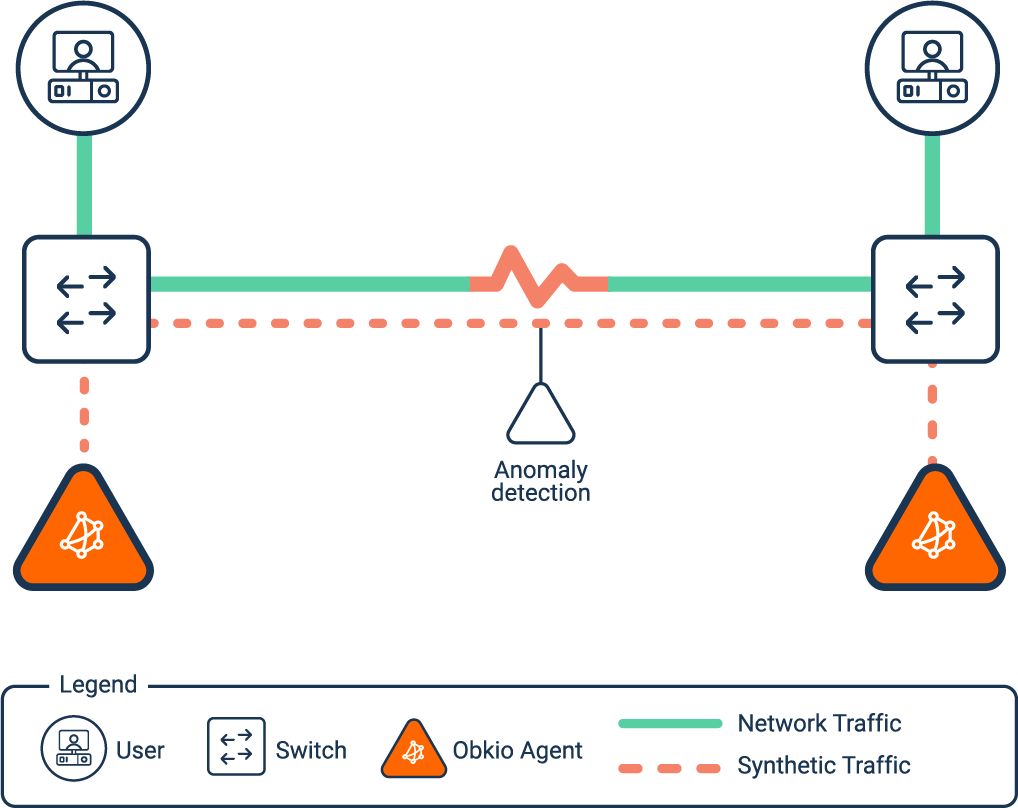
In summary, both packet capture and synthetic monitoring have their distinct roles in Network Performance Management:
- Packet Capture offers in-depth, real-data insights for troubleshooting, security, and user experience analysis. It is highly valuable when a deep dive into network traffic is needed to diagnose complex issues.
- Synthetic Monitoring takes a proactive approach to performance analysis, continuously testing network performance by simulating user interactions. It is excellent for benchmarking, ensuring SLA compliance, and monitoring performance from various locations.
Depending on your specific network management needs and objectives, you may choose to use one or both of these methods to gain a comprehensive view of your network's performance and take action accordingly.
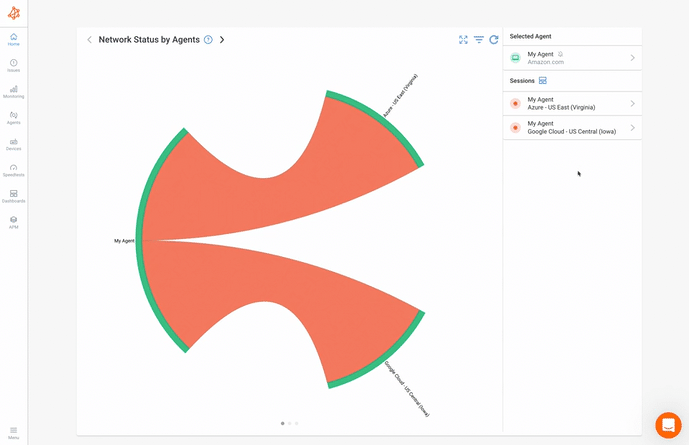
Network Troubleshooting and Diagnostics are crucial aspects of Network Performance Management (NPM). These processes are integral to maintaining the health, reliability, and efficiency of network infrastructure. They involve identifying and resolving issues that can disrupt network operations and degrade performance. Here's an in-depth exploration of this critical component:
1. Problem Identification:
Continuous Monitoring: Network performance management tools continuously monitor various parameters, such as bandwidth utilization, latency, packet loss, and device status. When these tools detect deviations from normal operating conditions, they generate alerts, making it easier to pinpoint issues.
- Anomaly Detection: NPM tools are equipped with anomaly detection mechanisms that compare real-time data with historical baselines. This enables the quick identification of unusual patterns or behaviors that might indicate network problems.
2. Root Cause Analysis:
- Packet Capture: For complex and hard-to-diagnose issues, packet capture or deep packet inspection is a valuable tool. It allows network administrators to examine the actual data packets traversing the network. By analyzing the content and flow of these packets, you can identify the root causes of performance problems, such as congestion, misconfigurations, or security threats.
- Topology Mapping: Understanding the physical and logical layout of your network is essential for root cause analysis. Network topology maps help identify potential trouble spots, including devices, connections, and bottlenecks.
- Historical Data Analysis: NPM tools store historical data, allowing you to review past performance trends and events. This can be instrumental in identifying recurrent issues or patterns that may be contributing to current problems.
3. Performance Metrics:
- Latency Analysis: Latency, or the delay in data transmission, can be a significant contributor to poor network performance. NPM tools provide metrics that allow you to assess latency at various points within your network, helping you identify areas where optimization is needed.
- Bandwidth Utilization: Understanding how bandwidth is being used is essential for network optimization. NPM tools provide insights into which applications or services are consuming the most bandwidth, enabling you to make informed decisions about allocation and prioritization.
4. Security Monitoring:
- Intrusion Detection: NPM tools can also play a role in security by monitoring network traffic for signs of intrusion or anomalous behavior. Detecting and responding to security threats is an important facet of network troubleshooting and diagnostics.
- Policy Adherence: NPM tools can ensure that network security policies and compliance requirements are met. By flagging deviations from established security policies, these tools help maintain the integrity of your network.
Network Troubleshooting and Diagnostics are integral to Network Performance Management. They are the processes that enable organizations to identify, analyze, and resolve issues that can disrupt network operations.
Learn the essential techniques, steps, and tools for network troubleshooting with our ultimate survival guide. Keep your network running smoothly and secure.
Learn more

Network performance optimization focuses on improving network performance by implementing necessary changes and optimizations. This can involve activities such as traffic shaping, Quality of Service (QoS) configuration, bandwidth allocation, load balancing, and network infrastructure upgrades. By optimizing network resources and configurations, organizations can enhance performance and ensure efficient data transmission.
- Bandwidth Management: Prioritize critical applications with QoS and implement traffic shaping.
- Redundancy: Create failover strategies and use redundant links for business continuity.
- Protocol and Routing Optimization: Evaluate and optimize network protocols and use network load balancing.
- Content Delivery: Employ caching and CDNs for faster content delivery.
- Network Security: Implement firewalls, intrusion detection, and access controls to safeguard performance.
- Device and Software Optimization: Regularly maintain and optimize network devices and software.
- Application Performance: Accelerate applications and ensure monitoring and troubleshooting for optimal user experience.
- Cloud Integration: Optimize hybrid and multi-cloud integration for seamless performance.
- User Experience Enhancement: Focus on user-centric metrics to improve satisfaction.
These strategies help networks run efficiently, meet evolving demands, and provide a positive user experience.
Optimize VoIP performance with QoS implementation. Explore best practices for QoS for VoIP, overcome challenges, and elevate clarity with Obkio's NPM tool.
Learn more

Network capacity planning is a fundamental aspect of Network Performance Management (NPM) that involves assessing and optimizing the network's ability to meet current and future demands. This proactive approach ensures that your network infrastructure remains robust and scalable, adapting to the evolving needs of your organization.
- Current Capacity Assessment: Analyze bandwidth and resource utilization.
- Growth Projections: Use historical data and business forecasts.
- Scalability Assessment: Evaluate hardware, software, and cloud considerations.
- Quality of Service (QoS) and Prioritization: Implement QoS policies and traffic shaping.
- Redundancy and Failover Planning: Consider redundancy and network failover strategies.
- Regular Assessments: Continuously monitor and adapt to changes.
- Cost Optimization: Strike a balance between performance and cost-effectiveness.
By engaging in capacity planning, you ensure that your network remains adaptable, reliable, and ready to meet your organization's evolving needs.
Network Visualization and Mapping play a vital role in Network Performance Management (NPM). They involve creating graphical representations of your network's physical and logical components to provide insights into its structure, connections, and status. Here's a detailed exploration of their importance and functions within NPM:
- Physical Mapping: This aspect involves illustrating the physical layout of your network, including routers, switches, servers, and their physical connections. Physical maps show the geographical placement of devices and help in understanding the network's hardware infrastructure.
- Logical Mapping: Logical maps focus on how network components interact at a higher level, emphasizing logical connections, IP addresses, subnets, and virtual LANs (VLANs). Logical maps provide insights into the network's operational structure.
Network Visualization and Mapping are powerful tools in Network Performance Management. They offer a clear visual representation of your network's physical and logical components, helping with troubleshooting, security, capacity planning, disaster recovery, documentation, and collaboration. Network maps serve as valuable references for monitoring network health, ensuring compliance, and supporting the overall efficiency of your network infrastructure.

User Experience Monitoring is a critical aspect of Network Performance Management (NPM) that focuses on assessing and improving how end-users perceive and interact with the network and its services. It's an essential component for ensuring that your network not only performs well from a technical standpoint but also meets the expectations and needs of its users.
- End-to-End Visibility: Providing a holistic view of the user journey.
- Real-World Insights: Capturing real user experiences beyond technical metrics.
- Proactive Issue Detection: Identifying problems before they significantly affect users.
- Response Time Measurement: Assessing application and service response times.
- Application Performance: Evaluating the performance of critical applications.
- Content Delivery Quality: Measuring page load times and web service availability.
- Network Responsiveness: Ensuring smooth day-to-day network usage.
- User Feedback Integration: Incorporating user feedback for improved prioritization.
- Root Cause Analysis: Identifying the sources of issues and their impact on user experience.
- SLA Adherence: Tracking user experience against agreed-upon service levels.
- Continuous Improvement: Driving ongoing network performance enhancement to enhance user satisfaction and productivity.
In essence, User Experience Monitoring prioritizes user satisfaction and drives improvements for a user-friendly and productive network.
Cloud Network Monitoring is an integral component of Network Performance Management (NPM) that focuses on ensuring optimal performance, security, and reliability of network resources and services in cloud-based environments. It's a critical practice for organizations operating in hybrid or multi-cloud setups.
- Hybrid and Multi-Cloud Environments: Cloud Network Monitoring addresses the unique challenges of hybrid networks that span on-premises and multiple cloud providers. It enables organizations to monitor and manage network performance seamlessly across these complex, interconnected environments.
- Performance Across Cloud Services: Cloud Network Monitoring provides insights into how network performance impacts the delivery of cloud-based services, including Infrastructure as a Service (IaaS), Platform as a Service (PaaS), and Software as a Service (SaaS).
Cloud Network Monitoring is crucial for organizations embracing cloud technologies. It ensures that cloud-based resources and services operate efficiently, securely, and in compliance with policies.
Discover the secrets to successful cloud network monitoring! Unleash the power of best practices & optimize performance with Obkio. Read more now!
Learn more

While network performance management is crucial, organizations often face challenges in achieving and maintaining optimal performance. Some common challenges include:
1. Network Complexity
Modern networks have become increasingly complex, with a mix of wired and wireless devices, cloud-based services, virtualized environments, and diverse application workloads. Managing such intricate networks poses challenges in terms of monitoring, analyzing, and optimizing performance across various network components.
2. Scalability and Capacity Planning
As organizations grow and evolve, their networks must scale accordingly to support increasing workloads and user demands. Scaling networks while maintaining performance requires careful capacity planning, anticipating future requirements, and ensuring sufficient network resources are in place.
3. Security and Performance Trade-offs
Implementing robust security measures often introduces additional network complexities and can impact performance. Balancing network security requirements with performance needs is a constant challenge that requires careful consideration and optimization.
4. Lack of Visibility and Monitoring Tools
Insufficient visibility into network performance can hinder the proactive identification and resolution of performance issues. A lack of robust monitoring tools and technologies can make it challenging to collect and analyze network data effectively.
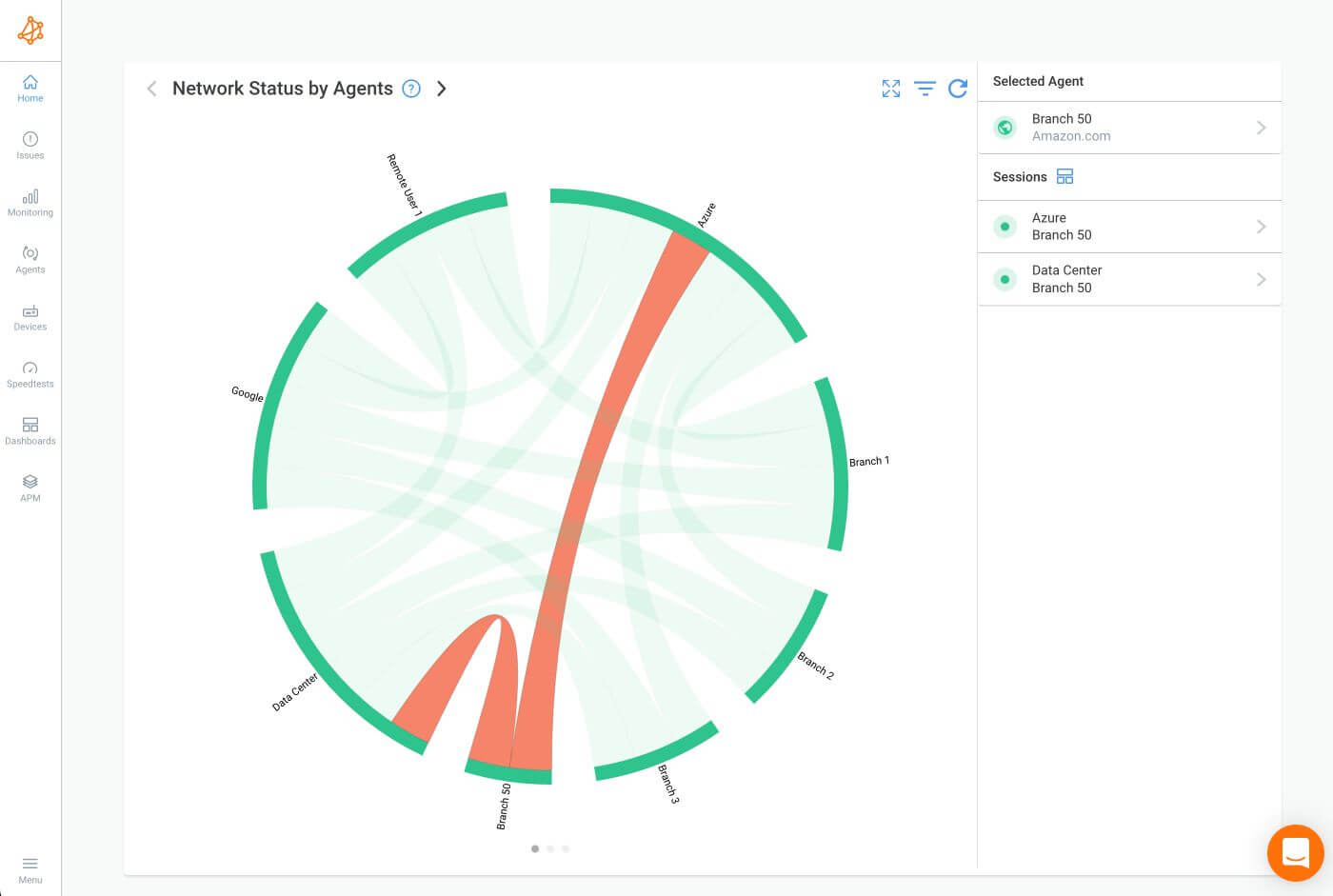
In the next section, we will explore the benefits of adopting a proactive approach to network performance management. We will examine how proactive management strategies can help prevent downtime, maximize network efficiency, reduce costs, and enhance user satisfaction.
Adopting a proactive approach to network performance management offers several benefits that directly contribute to maximizing productivity and minimizing downtime within an organization. In this section, we will explore the key advantages of proactive network performance management and how they positively impact business operations.
Downtime can have severe consequences for any organization, resulting in lost productivity, missed opportunities, dissatisfied customers, and potential revenue loss.
By proactively managing network performance, organizations can identify and address potential issues before they escalate into major problems. Regular monitoring, analysis of performance metrics, and proactive troubleshooting allow IT teams to detect and resolve network issues, minimizing the risk of downtime and service disruptions.
This proactive approach ensures continuous network availability and uninterrupted access to critical resources, enabling employees to work efficiently and customers to access services without interruption.
A well-performing network directly contributes to enhanced productivity and operational efficiency. By proactively managing network performance, organizations can optimize resource utilization, reduce network congestion, and minimize latency.
This ensures smooth and fast data transmission, improving the response times of critical applications and services. Employees can access resources quickly, collaborate seamlessly, and complete tasks efficiently.
Additionally, optimized network performance enables faster data transfers, enhancing communication with clients, suppliers, and partners. By maximizing network efficiency, organizations can unlock the full potential of their workforce and drive productivity gains.
A proactive approach to network performance management can help organizations reduce costs associated with network downtime, reactive troubleshooting, and inefficient resource allocation. By identifying and resolving performance issues before they escalate, organizations can avoid costly emergency repairs and minimize the impact of network failures.
Additionally, proactive network management enables efficient capacity planning, ensuring organizations have the right resources in place to meet their evolving needs. By optimizing network resources and eliminating inefficiencies, organizations can reduce unnecessary expenditures, improve cost predictability, and optimize their IT budgets.
Moreover, by proactively managing network performance, IT teams can focus on strategic initiatives, innovation, and value-added activities instead of constantly firefighting network issues, reducing the overall IT burden.
Proactive network performance management helps ensure that users, whether they are employees, customers, or partners, have a seamless and reliable network experience. By monitoring and optimizing network performance, organizations can minimize latency, packet loss, and other performance issues that can degrade user experience. This enhances overall satisfaction, boosts productivity, and contributes to long-term customer loyalty and retention.
By embracing a proactive approach to network performance management, organizations can enjoy these benefits and gain a competitive edge. In the next section, we will delve into the strategies and best practices for implementing proactive network performance management effectively.
Implementing a proactive approach to network performance management requires the adoption of effective strategies and practices. In this section, we will explore key strategies that organizations can employ to proactively monitor, analyze, and optimize network performance.
Real-time monitoring forms the foundation of proactive network performance management. By leveraging network monitoring tools and technologies, organizations can continuously monitor key performance metrics, such as bandwidth utilization, latency, packet loss, and device health. Real-time monitoring allows IT teams to promptly detect anomalies, identify potential performance issues, and take immediate actions to mitigate risks.
Automated network monitoring alerts and notifications can be set up to notify IT personnel whenever predefined performance thresholds are exceeded, enabling them to respond swiftly and proactively address emerging issues.
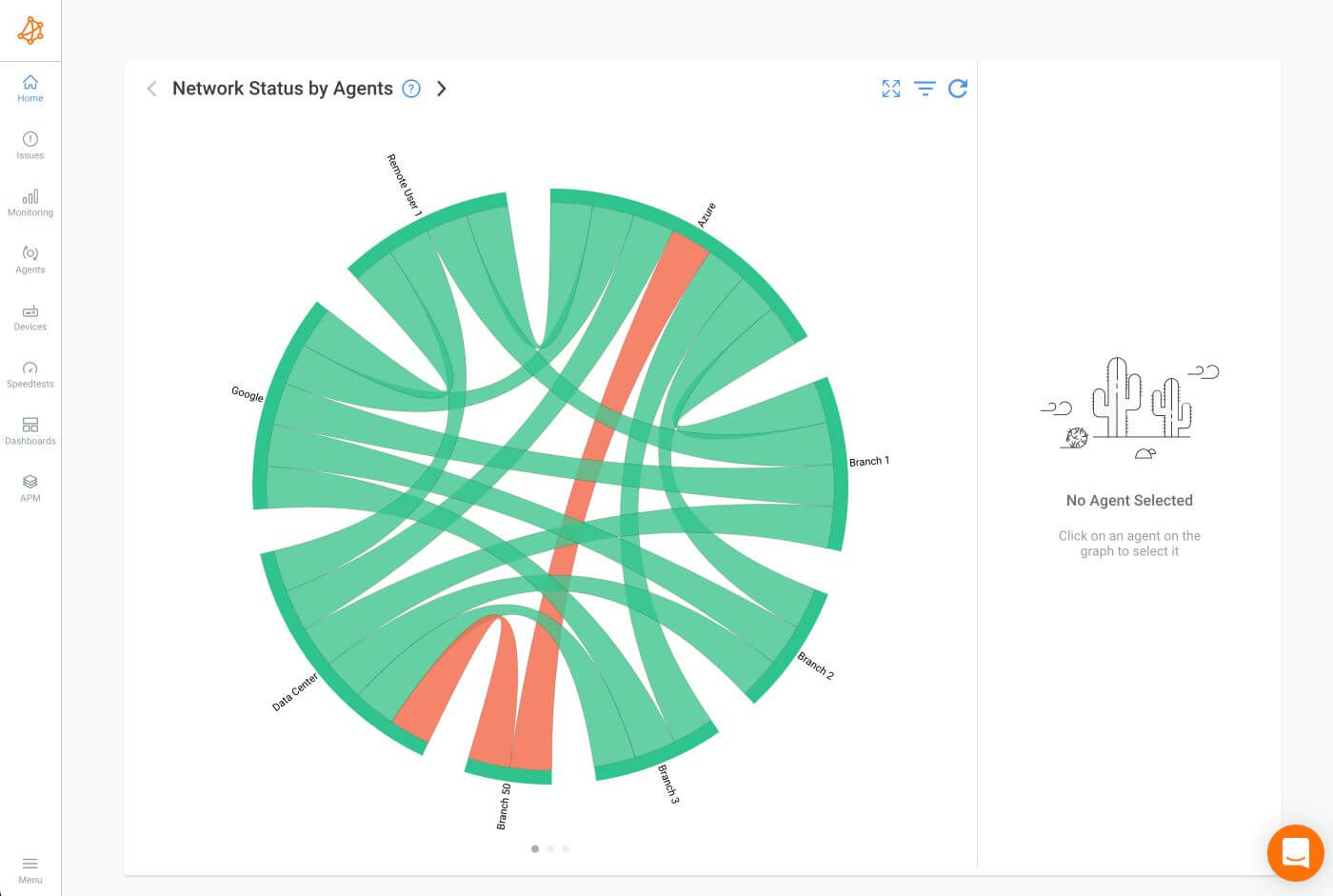
Establishing performance baselines and thresholds is crucial for proactive network performance management. Performance baselines are benchmarks that represent normal or expected network performance under typical operating conditions. By collecting historical data and establishing baselines for different network metrics, organizations can gain insights into typical network behavior and performance patterns.
These network baselines serve as a reference point for identifying deviations from normal performance. Thresholds, on the other hand, are predefined limits set for specific performance metrics. When network metrics exceed these thresholds, alerts are triggered, signaling potential issues that require attention.
By defining and monitoring performance baselines and thresholds, organizations can proactively identify abnormal network behavior and take proactive measures to address emerging performance issues.
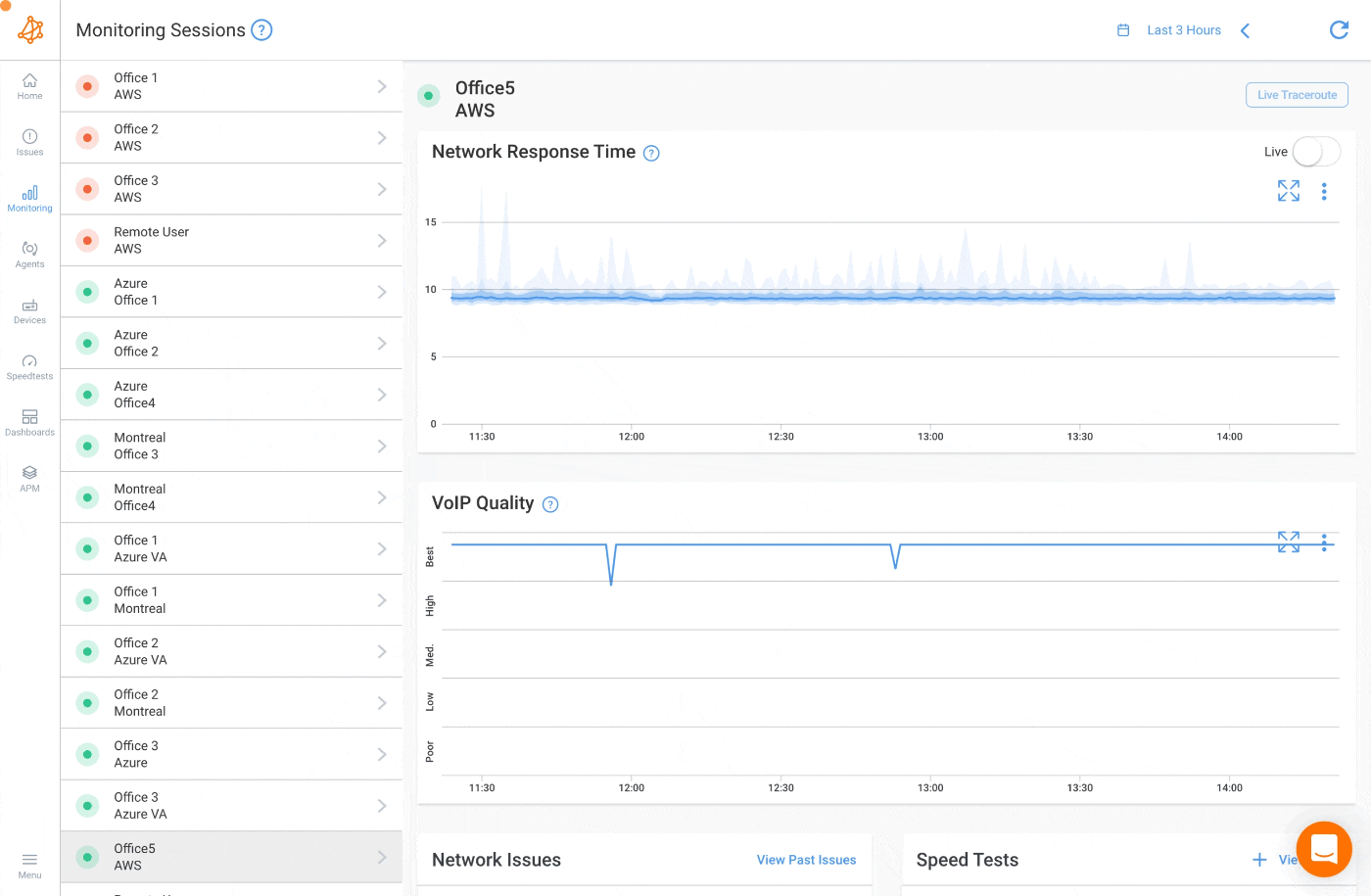
Predictive analytics and machine learning techniques can greatly enhance proactive network performance management. By analyzing historical network performance data and leveraging machine learning algorithms, organizations can identify patterns and trends that can predict future performance issues. Predictive analytics can help forecast potential network capacity constraints, predict device failures, and anticipate network performance degradation.
By utilizing these insights, IT teams can take preventive actions to mitigate risks and proactively optimize network performance.
Proactive capacity planning and scalability are essential for maintaining optimal network performance. Organizations should anticipate future growth, changes in network usage patterns, and emerging technologies that may impact network performance.
By conducting regular capacity assessments and considering factors such as data volume, user demands, and application requirements, organizations can ensure that their networks have sufficient capacity to handle increasing workloads. Scalable network architectures, such as cloud-based solutions or modular designs, can provide the flexibility to accommodate future growth without compromising performance.
Proactive capacity planning ensures that organizations can scale their networks in a timely manner, avoiding performance bottlenecks and minimizing the risk of network saturation.
Regular maintenance and network audits play a vital role in proactive network performance management. Organizations should establish maintenance schedules for network devices, perform regular firmware updates, and conduct thorough system checks to identify potential vulnerabilities or performance issues. Regular audits of network configurations, security measures, and performance optimization settings can help ensure that the network is operating at its full potential.
By proactively maintaining network infrastructure and conducting regular audits, organizations can minimize the risk of performance degradation due to outdated firmware, misconfigurations, or security vulnerabilities.
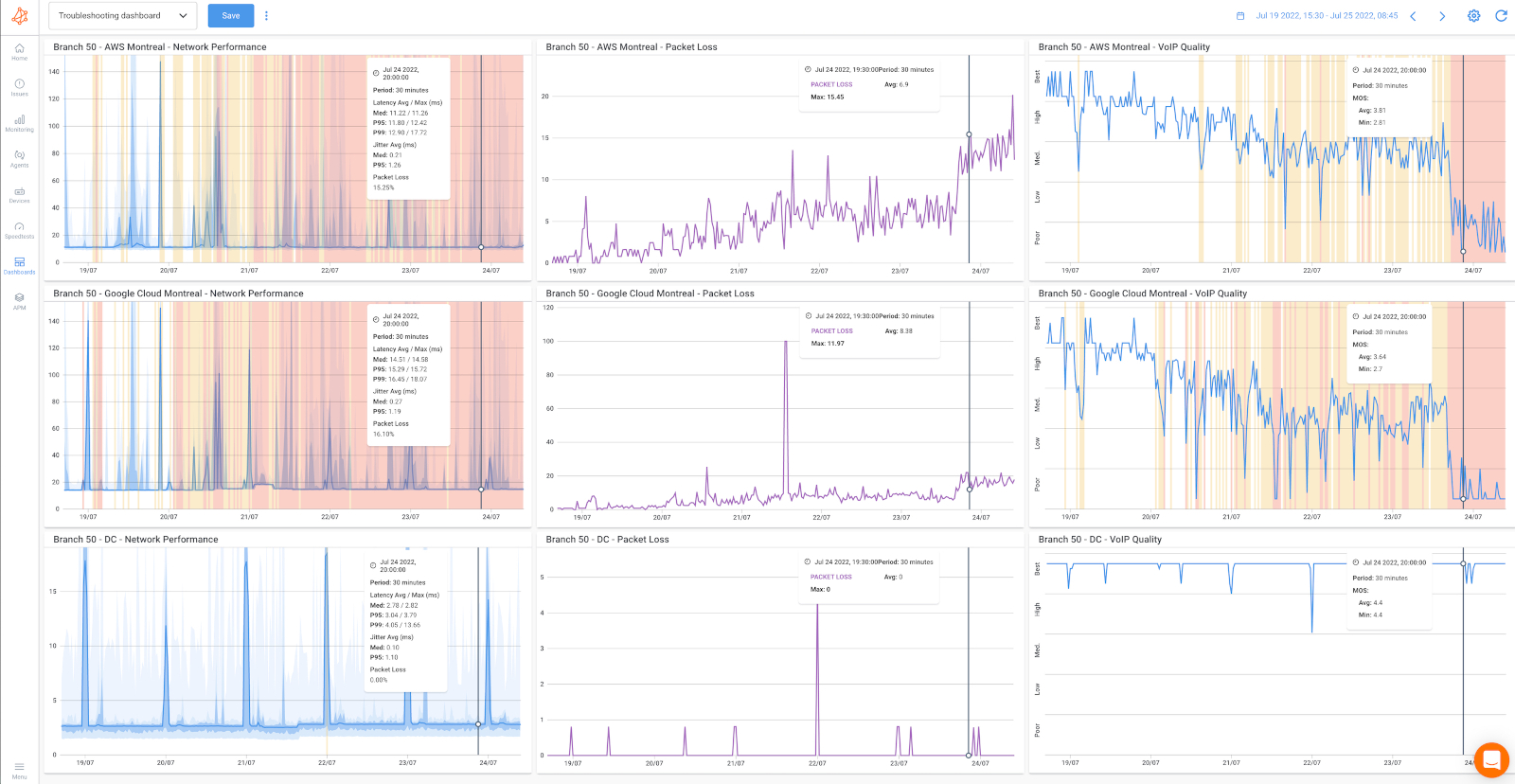
In the next section, we will explore the practical aspects of implementing a proactive approach to network performance management. We will discuss how organizations can assess their current network performance, identify critical components, select appropriate tools, establish key performance indicators (KPIs), and create an effective network performance management plan.
Implementing a proactive approach to network performance management requires careful planning and execution. In this section, we will explore the practical steps involved in implementing proactive network performance management effectively.
Before implementing proactive network performance management strategies, it is crucial to assess the current state of your network performance. A network assessment involves gathering data on network metrics, such as bandwidth utilization, latency, packet loss, and application response times. Network monitoring tools and performance analytics can provide valuable insights into the existing network performance. This Network Assessment Template can help you with that.
Unlock the power of network assessment with our step-by-step network assessment template. Follow this ultimate blueprint for ongoing network excellence.
Learn more

By analyzing this data, you can identify areas where performance issues are occurring, bottlenecks are arising, or resource utilization is suboptimal. This assessment serves as a baseline for measuring the effectiveness of proactive measures implemented later.
To prioritize proactive performance management efforts, it is important to identify the critical components of your network. These components may include network switches, routers, firewalls, servers, and mission-critical applications.
By understanding the dependencies and impact of these components on overall network performance, you can focus your proactive efforts on the most critical areas. This involves evaluating the importance of each component in terms of business operations, user impact, and resource consumption.
Let's delve deeper into some key critical network components:
- Routers: Routers serve as the gateway to the internet, making them not only the traffic cop of your network but also a critical component for network security. They are responsible for directing data packets to their intended destinations efficiently.
- Switches: Network switches manage the flow of data between devices within a local network. Their role is pivotal in determining how data is forwarded, minimizing network congestion, and ensuring the swift delivery of data.
- Firewalls: Firewalls are your network's guardians, monitoring and controlling incoming and outgoing network traffic based on predefined security rules. Their primary function is safeguarding your network against unauthorized access and potential threats.
- Servers: Servers are the workhorses of your network, hosting and providing access to applications, databases, files, and services. Their efficient operation is essential for the smooth functioning of applications and services.
- Mission-Critical Applications: These applications are at the core of your organization's daily operations. Examples include customer relationship management (CRM) software, financial systems, and e-commerce platforms. Ensuring their availability and optimal performance is paramount for business continuity.
- Data Storage and Backup: Data storage systems are responsible for housing and safeguarding your organization's data. Ensuring efficient storage and backup solutions is critical for preserving data integrity and availability, especially in case of data loss or hardware failures.
- Load Balancers: Load balancers distribute network traffic across multiple servers or resources, ensuring even distribution of workloads. Their role is to enhance performance, optimize resource utilization, and provide redundancy, making them important for high availability.
- Network Security Appliances: These include intrusion detection and prevention systems (IDS/IPS), antivirus gateways, and security information and event management (SIEM) systems. These appliances help protect your network from threats and monitor security events.
- Virtual Private Networks (VPNs): In the current landscape of remote work, VPNs are essential for secure remote access to your network. Their availability and performance are critical for supporting remote employees.
- VoIP and Unified Communications: These systems are integral for business communication. Ensuring clear call quality and reliable communication services is crucial for productivity.
- Wireless Access Points: As wireless networks become more prevalent, the availability and performance of wireless access points are crucial for providing reliable wireless connectivity to devices.
- Cloud Services: If your organization leverages cloud services, these become integral components. Ensuring that cloud services meet performance expectations is essential for a seamless user experience.
- Internet Service Providers (ISPs): Your network's connection to the internet is dependent on the quality and reliability of your ISP(s), which can significantly impact network performance and availability.
Recognizing and prioritizing these critical network components forms the bedrock of proactive performance management. Each component has a specific role in maintaining network health, security, and functionality. By proactively monitoring, optimizing, and ensuring the redundancy of these components, you create a robust and resilient network infrastructure that can adapt to evolving business needs and challenges.
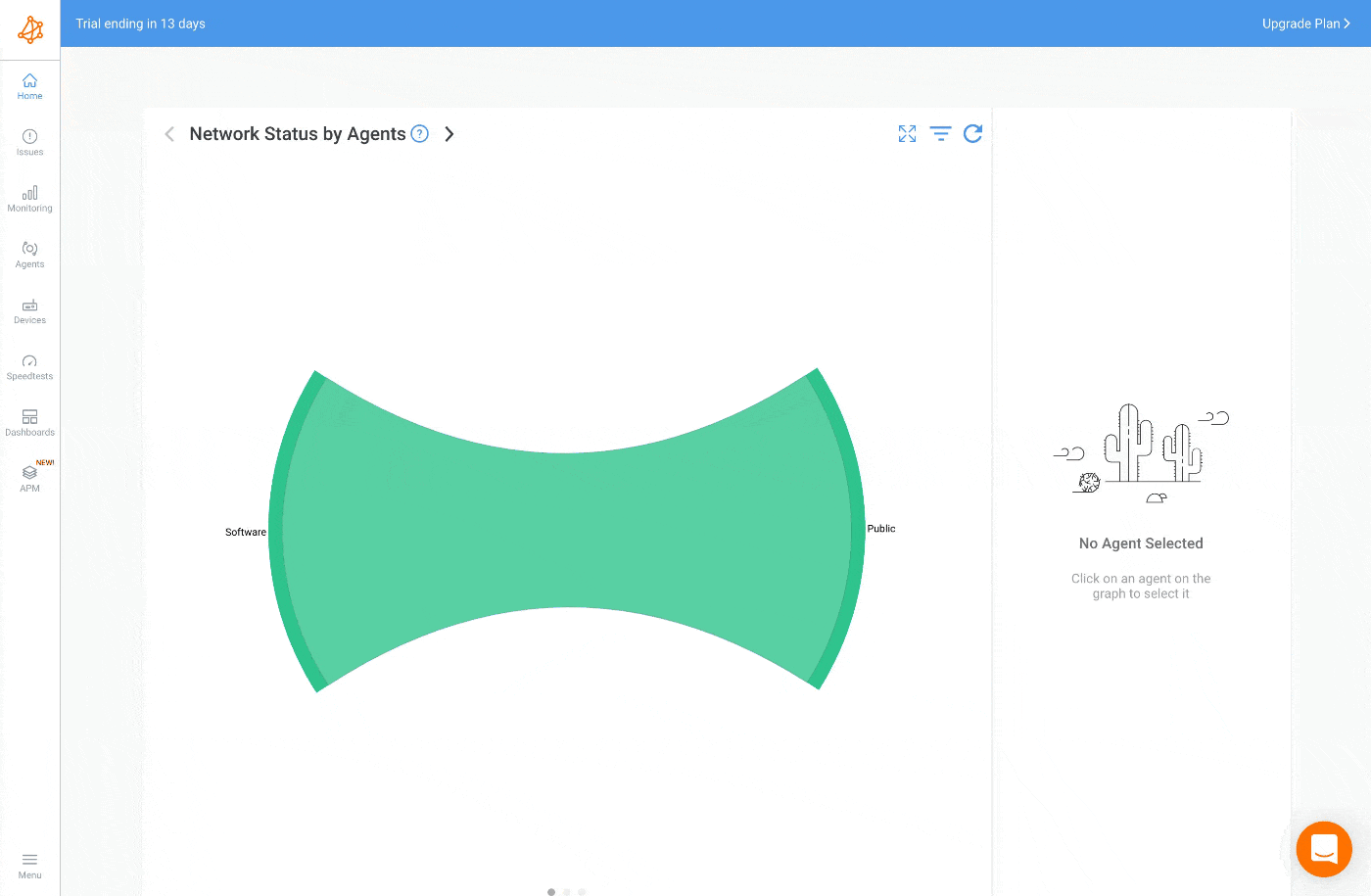
Choosing the right network performance management tools is essential for effective proactive management. There are various tools available in the market that offer features such as real-time monitoring, performance analytics, alerting mechanisms, and capacity planning capabilities.
Consider your organization's specific needs and requirements when evaluating these tools. Look for features that align with your proactive network performance management strategies, including the ability to set performance thresholds, generate automated alerts, and provide historical data for trend analysis. Select tools that offer scalability and integration options to accommodate future network growth and evolving technologies.
Here's a key consideration: Do you actually need an all-encompassing NPM tool with a multitude of features, or would a streamlined solution that primarily focuses on performance monitoring and troubleshooting be more effective for your organization?
1. Assess Your Business Needs:
To make an informed decision, start by conducting an internal assessment of your business needs. This includes considering the size and complexity of your network, the nature of your operations, and the specific challenges you face. Understanding your unique requirements will help you determine the depth and breadth of NPM features necessary for your network.
2. Customize Your NPM Solution:
While some organizations may benefit from a comprehensive NPM tool with an extensive feature set, others may find that a more streamlined approach is both cost-effective and efficient. Customizing your NPM solution to match your business needs can result in a more tailored and cost-effective strategy.
3. Performance Monitoring and Troubleshooting:
Performance monitoring and troubleshooting are often the fundamental pillars of NPM. These core functions enable you to monitor your network's performance in real-time, detect issues as they arise, and troubleshoot them efficiently. For many organizations, this level of monitoring and issue resolution may be sufficient to maintain network health.

While a feature-rich NPM tool might be alluring, it's crucial to remember that the ultimate goal is to address your specific business needs effectively. For many organizations, prioritizing core functions such as performance monitoring and troubleshooting can provide an efficient and cost-effective solution. By aligning the tool with your actual requirements, you ensure that your NPM strategy enhances network performance, aids in issue resolution, and contributes to the overall success of your organization.
If you're in search of a tool that can seamlessly monitor, assess, troubleshoot, and optimize end-to-end network performance, look no further. Obkio is your solution.
[Obkio's Network Performance Monitoring tool]/ is designed to cater to your unique network performance needs. Whether you're an organization looking for comprehensive network insights or simply aiming to streamline performance monitoring and troubleshooting, Obkio offers the flexibility and scalability to meet your requirements.
Take the proactive approach to network performance management with Obkio and experience:
- Real-time network performance monitoring
- Automated troubleshooting for rapid issue resolution
- Customizable solutions to fit your business needs
- Scalability to grow with your network
- Valuable insights for cost-effective network management
Don't compromise on network efficiency and reliability. Explore the possibilities with Obkio and empower your organization to thrive in the digital age.

To measure the effectiveness of your proactive network performance management efforts, it is important to establish key network metrics and KPIs to measure the performance of your network.
KPIs are quantifiable metrics that reflect the performance goals of your network. They can include parameters such as network uptime, application response times, bandwidth utilization, and user satisfaction ratings. By defining KPIs that align with your business objectives and monitoring them regularly, you can track the progress of your proactive performance management initiatives and make data-driven decisions to optimize network performance.
Here are some network metrics that you can use for network performance monitoring:
- Network Availability: Network Availability measures the percentage of time the network is operational and accessible to users. It indicates the reliability and uptime of the network.
- Network Latency: Network latency measures the time it takes for data to travel from one point to another within the network. It is typically measured in milliseconds (ms) and represents the responsiveness of the network. Lower latency values indicate better network performance.
- Packet Loss: Packet loss refers to the percentage of data packets that are lost or do not reach their destination within the network. Minimizing packet loss is crucial for ensuring the integrity of data transmission and avoiding delays or disruptions.
- Network Throughput: Network throughput measures the amount of data that can be transmitted over the network within a given time frame. It indicates the network's capacity and efficiency in handling data traffic. Higher throughput values indicate better network performance.
- Network Bandwidth Utilization: This KPI measures bandwidth and, more specifically, the percentage of available network bandwidth that is being utilized. It helps in identifying network congestion and optimizing resource allocation. Monitoring bandwidth utilization ensures that network resources are efficiently utilized and prevents overloading.
- Response Time of Critical Applications: This KPI measures the time it takes for critical applications to respond to user requests. It directly impacts user experience and productivity. Monitoring response times helps identify performance issues and optimize application performance.
- Mean Time to Repair (MTTR): MTTR measures the average time taken to resolve network issues or incidents. It reflects the efficiency of the IT team in identifying and resolving performance problems. Minimizing MTTR ensures prompt issue resolution and reduces the impact on network performance.
- Network Security Incidents: This KPI measures the number of security incidents or breaches within the network. It indicates the effectiveness of security measures and the network's vulnerability to cyber threats. Monitoring security incidents helps identify potential performance impacts and ensures network security.
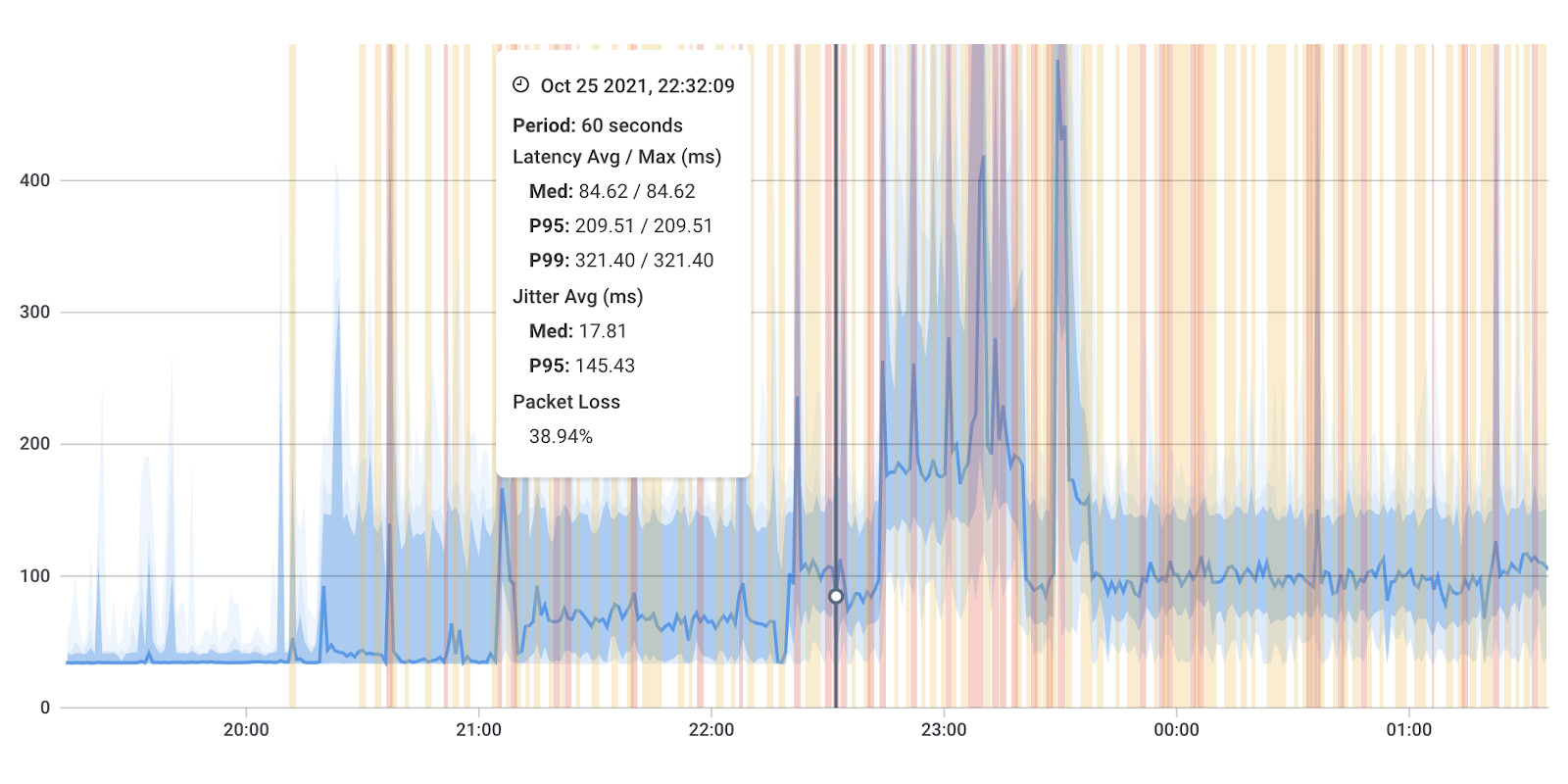
These are just a few examples of KPIs for network performance monitoring. Organizations can select and customize KPIs based on their specific requirements, objectives, and the critical aspects of their network infrastructure.
These KPIs provide insights into network performance, help identify areas for improvement, and facilitate proactive actions to optimize network efficiency and user experience.
Developing a comprehensive network performance management plan is vital for successful implementation. This plan should outline the proactive strategies, tools, and processes you will employ to monitor, analyze, and optimize network performance. It should include details on monitoring schedules, regular maintenance activities, performance analysis procedures, and troubleshooting workflows.
Additionally, the plan should define roles and responsibilities within your IT team and establish communication channels for timely collaboration and issue resolution. Regular reviews and updates of the performance management plan are necessary to adapt to changing network requirements and technologies.

Here's an example of a Network Performance Management Plan:
The Network Performance Management Plan outlines the proactive strategies and activities to monitor, analyze, and optimize network performance within our organization. By implementing this plan, we aim to maximize productivity, minimize downtime, and ensure optimal network performance.
This plan will guide our efforts in maintaining a reliable and high-performing network infrastructure.
- Ensure network availability of at least 99.9% to minimize downtime, disruptions and network disconnections.
- Maintain network latency below 50 milliseconds (ms) to ensure responsive communication and efficient data transfer.
- Minimize packet loss to less than 0.1% to ensure reliable data transmission.
- Achieve network throughput of at least 1 Gbps to meet the increasing demand for data transfer.
- Optimize network bandwidth utilization to ensure efficient resource allocation and prevent congestion.
- Maintain response times of critical applications below 2 seconds to enhance user experience and productivity.
- Minimize Mean Time to Repair (MTTR) by promptly identifying and resolving network issues.
- Enhance network security measures to minimize the risk of performance-impacting security incidents.
- Network Availability: Achieve a network availability of 99.9% or higher.
- Network Latency: Maintain network latency below 50 milliseconds (ms).
- Packet Loss: Keep packet loss below 0.1%.
- Network Throughput: Achieve network throughput of at least 1 Gbps.
- Network Bandwidth Utilization: Optimize network bandwidth utilization to maintain utilization below 80%.
- Response Time of Critical Applications: Maintain response times of critical applications below 2 seconds.
- Mean Time to Repair (MTTR): Minimize MTTR to an average of 4 hours or less.
- Network Security Incidents: Reduce the number of network security incidents by 20% compared to the previous year.
Learn how to measure network performance with key network metrics like throughput, latency, packet loss, jitter, packet reordering and more!
Learn more

- Implement real-time network monitoring tools to capture and analyze network performance metrics.
- Monitor key performance indicators such as network availability, latency, packet loss, throughput, jitter.
- Utilize network monitoring dashboards to gain real-time visibility into network performance and detect anomalies.
- Set up automated alerts and notifications for performance thresholds breaches.
- Regularly analyze network traffic patterns, utilization trends, and performance data to identify potential issues or bottlenecks.

- Conduct regular performance testing and optimization to identify and address performance bottlenecks.
- Optimize network configurations, protocols, and routing to ensure efficient data transmission.
- Implement Quality of Service (QoS) policies to prioritize critical applications and allocate network resources effectively.
- Monitor and optimize network security measures to prevent performance-impacting security incidents.
- Regularly review and optimize network hardware and software components to ensure optimal performance.
- Perform regular capacity assessments to anticipate network growth and changing requirements.
- Ensure sufficient network resources to accommodate increased workloads and user demands.
- Scale the network infrastructure in a timely manner to avoid performance degradation and saturation.
- Embrace scalable solutions such as cloud-based services or modular designs to accommodate future network expansion.
- Foster collaboration among IT teams, including network administrators, system administrators, application developers, and security teams.
- Establish regular meetings and communication channels for timely coordination and issue resolution.
- Encourage knowledge sharing and cross-team collaboration to leverage diverse expertise and perspectives.
- Provide continuous education and training for IT personnel on network performance management best practices, emerging technologies, and security measures.
- Encourage professional certifications and participation in industry events to stay updated on the latest trends and advancements.
- Conduct regular performance reviews to evaluate network performance against predefined KPIs.
- Perform audits of network configurations, security measures, and compliance adherence.
- Identify areas for improvement and make necessary adjustments to the network performance management plan.
The Network Performance Management Plan serves as a roadmap to proactively manage and optimize our network performance.
By aligning our efforts with the defined goals, KPIs, and strategies outlined in this plan, we can ensure a reliable, efficient, and high-performing network infrastructure that supports our organization's productivity and growth.
Learn how to perform a network assessment with Obkio Network Monitoring to optimize network performance for a new service deployment or migration.
Learn more

By following these steps, organizations can effectively implement a proactive network performance management approach.
The assessment of current performance, identification of critical components, selection of appropriate tools, establishment of KPIs, and creation of a performance management plan lay the foundation for a proactive and optimized network infrastructure.
To ensure the success of your proactive network performance management initiatives, it is important to follow industry best practices. In this section, we will explore key best practices that can help organizations optimize their network performance proactively.
Effective network traffic monitoring is essential for proactive performance management. Implementing robust monitoring solutions that capture and analyze network traffic allows organizations to gain real-time visibility into network behavior.
By closely monitoring network traffic patterns, utilization, and performance metrics, IT teams can proactively identify potential bottlenecks, abnormal behavior, or security threats.
Analyzing network traffic also helps in capacity planning, identifying trends, and optimizing network resources for maximum efficiency.
Regular network performance testing and optimization are crucial for maintaining optimal network performance. Periodic performance tests, such as network load testing or stress testing, help identify the network's capacity limits, potential performance bottlenecks, and areas that require optimization.
By simulating real-world scenarios, organizations can proactively identify weaknesses, fine-tune configurations, and optimize resource allocation.
Regular performance optimization activities, such as tuning network protocols, configuring Quality of Service (QoS) policies, and optimizing network routing, contribute to consistent network performance and enhanced user experience.
Proactive network performance management requires effective collaboration and communication among IT teams. Network administrators, system administrators, application developers, and security teams should work together to ensure a holistic approach to network performance management.
Regular meetings, cross-team coordination, and open communication channels enable a proactive response to network issues. By fostering collaboration, teams can share insights, align performance management strategies, and address issues collectively, leading to quicker resolution and improved overall network performance.
Network technologies and best practices evolve rapidly, and it is essential to invest in continuous education and training for IT personnel. By keeping abreast of the latest advancements in network performance management, IT teams can acquire the necessary skills and knowledge to implement proactive strategies effectively.
This includes training on network monitoring tools, performance analysis techniques, security practices, and emerging technologies. Regular training sessions, certifications, and knowledge sharing forums contribute to building a skilled and proactive IT workforce.
Regular performance reviews and audits play a critical role in proactive network performance management. By conducting periodic reviews of network performance metrics, KPIs, and overall performance against predefined thresholds, organizations can identify areas for improvement and track the effectiveness of proactive measures.
Additionally, regular audits of network configurations, security measures, and compliance adherence help ensure that the network remains secure and optimized.
By continually reviewing and auditing network performance, organizations can maintain a proactive stance towards performance management and make necessary adjustments as required.
By adhering to these best practices, organizations can establish a proactive network performance management culture and ensure optimal performance, productivity, and reliability of their networks.
Explore essential network monitoring best practices for network admins, from choosing the right tools to troubleshooting internal and external issues.
Learn more

As technology continues to advance and networks become increasingly complex, the future of proactive network performance management holds promising possibilities. In this section, we will explore emerging technologies and trends that are shaping the future of proactive network performance management.
Artificial Intelligence (AI) and Machine Learning (ML) are revolutionizing network performance management. These technologies enable predictive analytics, anomaly detection, and automated responses to network events.
AI-powered network management systems can analyze vast amounts of data in real-time, identify patterns, and predict potential performance issues before they occur. ML algorithms can learn network behavior and proactively adjust configurations, optimize resource allocation, and dynamically respond to changing network conditions.
The integration of AI and ML into network performance management is expected to significantly enhance proactive capabilities and drive greater efficiency and reliability.
Software-Defined Networking (SDN) is another emerging trend that empowers organizations to proactively manage network performance. SDN decouples network control and forwarding functions, allowing centralized control and programmability of network infrastructure. With SDN, organizations can dynamically allocate network resources, adjust routing policies, and implement proactive performance management strategies through software-defined controllers.
By leveraging SDN technologies, organizations can achieve greater flexibility, scalability, and agility in managing network performance.
The proliferation of Internet of Things (IoT) devices and edge computing presents new challenges and opportunities for proactive network performance management. The increasing number of IoT devices and their reliance on real-time data transmission require proactive strategies to ensure consistent network performance and responsiveness.
Edge computing, which brings computation and data storage closer to IoT devices, demands optimized network performance at the edge. Proactive network management solutions must address the unique requirements and challenges associated with IoT and edge computing, ensuring reliable connectivity, low latency, and efficient data transfer.
Artificial Intelligence (AI) and automation will play a pivotal role in the future of proactive network performance management. AI-powered analytics and automation tools can continuously monitor network performance, analyze data, detect anomalies, and automatically take proactive actions.
AI algorithms can optimize network configurations, fine-tune performance parameters, and predict potential performance issues based on historical data and real-time inputs. Automation can streamline routine maintenance tasks, perform intelligent troubleshooting, and dynamically adjust network resources to ensure optimal performance.
The combination of AI and automation will enable proactive network performance management to operate at unprecedented levels of efficiency, accuracy, and responsiveness.
In an increasingly interconnected and vulnerable digital landscape, the integration of security and network performance management will be critical. Proactive network performance management must consider security aspects such as threat detection, prevention, and response.
The ability to proactively monitor network traffic for potential security breaches, analyze security-related performance metrics, and rapidly respond to emerging threats will be paramount.
By integrating security measures into proactive network performance management strategies, organizations can protect their networks from performance-impacting security incidents and ensure both performance and security are effectively managed.
As these emerging technologies and trends continue to evolve, organizations must stay abreast of the latest developments and adapt their proactive network performance management strategies accordingly.
By embracing these advancements, organizations can proactively address network performance challenges, enhance productivity, and future-proof their networks.
Unlock the secrets of network monitoring basics in this article. Dive into everything you need to get started with ease – it's not rocket science!
Learn more

Proactive network performance management is no longer a luxury; it is a necessity. By adopting a proactive approach, organizations can maximize productivity, minimize downtime, and ensure optimal network performance. Throughout this article, we have explored the importance of network performance management, the benefits of proactive strategies, and the key components involved in its implementation.
We learned that proactive network performance management helps prevent downtime and service disruptions by identifying and resolving issues before they escalate.
It maximizes network efficiency and productivity, leading to enhanced user experiences and customer satisfaction. Additionally, a proactive approach reduces costs and IT burdens by optimizing resource utilization and streamlining operations.
To implement a proactive network performance management approach effectively, organizations should assess their current network performance, identify critical components, select appropriate tools, establish key performance indicators (KPIs), and create a comprehensive performance management plan.
Best practices, such as monitoring and analyzing network traffic, regular performance testing and optimization, collaboration among IT teams, continuous education and training, as well as regular performance reviews and audits, contribute to the success of proactive initiatives.
Looking ahead, we explored the future of proactive network performance management, highlighting emerging technologies such as AI and ML, SDN, and the impact of IoT and edge computing.
We emphasized the role of AI and automation in driving efficiency and responsiveness and the integration of security measures into proactive performance management strategies.

By embracing these strategies, best practices, and future trends, organizations can proactively manage their network performance, stay ahead of potential issues, and ensure their networks are resilient, efficient, and reliable.
In conclusion, proactive network performance management is a powerful approach that enables organizations to maximize productivity, minimize downtime, and deliver exceptional user experiences. By prioritizing proactive measures, investing in the right tools and technologies, and fostering a culture of continuous improvement, organizations can gain a competitive edge and thrive in the digital age.
Put It to the Test: Trying Is the Ultimate Way to Learn!
Networks may be complex. But Obkio's Network Performance Monitoring tool makes network monitoring easy. Monitor, measure, pinpoint, troubleshoot, and solve network problems.
- 14-day free trial of all premium features
- Deploy in just 10 minutes
- Monitor performance in all key network locations
- Measure real-time network metrics
- Identify and troubleshoot live network problems

You can rest assured that we're not like those pushy salesy people - there's no catch here. We firmly believe in the excellence of our product, but if it's not the right fit for you, we understand and want what's best for you.


























 Obkio Blog
Obkio Blog









